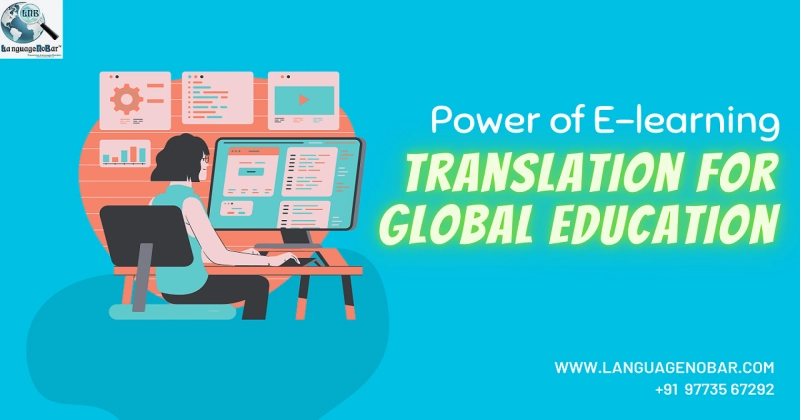In today's globalized world, e-learning has become an essential for educational institutions, and individuals. The rapid growth of e-learning platforms and courses has made it easier for people to access education and training from anywhere in the world. However, with this increased accessibility comes the need for e-learning translation.Let’s discuss everything you need to know about e-learning translation, including its importance, challenges, and best practices.
What is E-learning Translation?
E-learning translation is the process of converting e-learning content from one language to another. This includes everything from the text on the screen to the audio and video components. Professional Translators work on the e-learning translation.
Why is E-learning Translation Important?
E-learning translation is essential for several reasons. It allows organizations and educational institutions to reach a wider audience. By translating e-learning content into multiple languages, they can cater to learners from different parts of the world, who may have different language preferences. This is especially important for businesses that operate in global markets, as it allows them to communicate effectively with their customers and employees.E-learning translation helps to improve the quality of learning. When learners can access e-learning content in their native language, for example premium English to Telugu translation, they are more likely to understand the material and retain the information. This can lead to better learning outcomes and improved performance.Challenges in E-learning Translation
E-learning translation can be a challenging process. Here are some of the common challenges in e-learning translations:
Cultural differences: E-learning content often includes cultural references that may not make sense in other languages or cultures. Translators need to be aware of these differences and adapt the content accordingly.Technical jargon: E-learning content often includes technical jargon that may not have a direct translation in other languages. Translators need to find the appropriate terminology to convey the same meaning.Audio and video components: E-learning content often includes audio and video components, which can be challenging to translate. The timing and synchronization of these components need to be carefully considered to ensure that the translated content matches the original content.Time and cost: E-learning translation can be time-consuming and expensive, especially if it involves multiple languages. Organizations need to factor in the time and cost of translation when planning their e-learning initiatives.Best Practices in E-learning Translation
To overcome the challenges in e-learning translation, organizations need to follow certain best practices.
Use professional translation agency: E-learning translation should be done by professional translators who are experienced in translating e-learning content. They should have a deep understanding of the subject matter and be familiar with the technical terminology used in the content.Plan ahead: Organizations should plan their e-learning translation initiatives well in advance. This will allow them to budget for the cost of translation and ensure that they have enough time to complete the translation process before the content is needed.Consider cultural differences: Translation agency should be aware of cultural differences and adapt the content accordingly. This includes avoiding references that may not make sense in other cultures and ensuring that the tone and style of the content are appropriate for the target audience.In conclusion, e-learning translation is an essential process that allows organizations and educational institutions to reach a wider audience, improve the quality of learning, and comply with legal requirements. However, it can be a challenging process that requires careful planning, the use of professional translators, and consideration of cultural differences. By following best practices and testing the translated content, organizations can ensure that their e-learning initiatives are successful and effective for learners from different parts of the world. LanguageNoBar - finest translation service provider in India that ensures the continued growth of e-learning, e-learning translation will become even more important in the future, and it is essential for organizations to invest in this process to achieve their goals.


